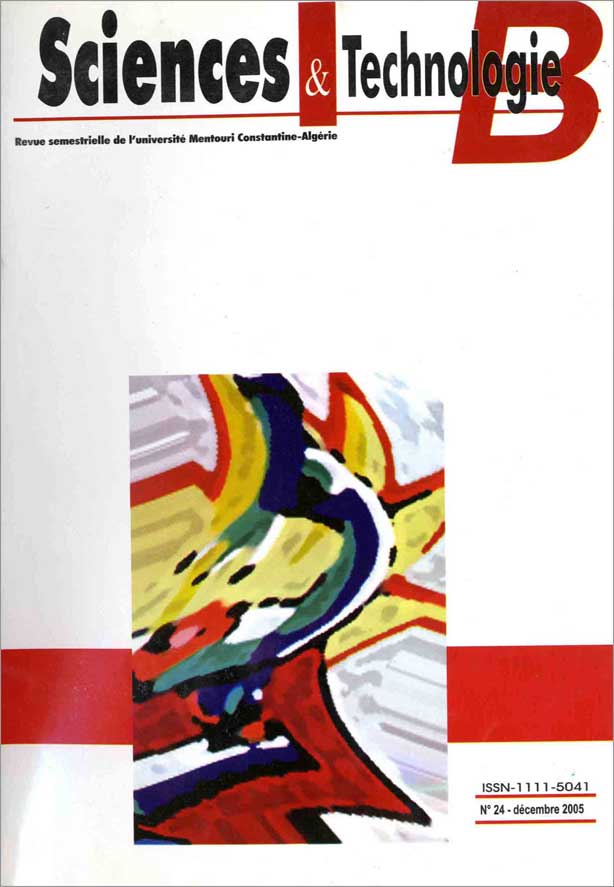NUMERICAL MODELING OF AN L – SHAPED VERY STIFF CONCRETE RETAINING WALL
Mots-clés :
Numerical model, Plaxis program, Centrifuge testing, Prototype, Retaining WallRésumé
A numerical model developed using the finite element Plaxis program is presented in this paper tosimulate the behaviour of a stiff “L” shaped retaining wall supporting sand. For validating the
proposed numerical model, reference was made to an experimental model tested in a centrifuge
experiment. The proposed numerical model intended to predict the behaviour of a target prototype
and to check the validity of the modelling concept used. Taking into account the geometry and
dimensions of the wall with respect to the centrifuge scaling law, the loading conditions and
considering the hardening soil model, it was found that the predicted pattern and magnitude of the
wall displacements were close to the experimentally observed results. A good agreement between the
measured and the numerically computed lateral pressures acting on the wall stem was also obtained
with comparison to the classical approach.
Références
- Brinkgreve, R.B.J. ; Vermeer, P.A. (2002). “PLAXIS:
Finite Element Code for Soil and Rock Analyses”
Version 8. A.A. Balkema, Rotterdam / Brookfield.
- Djerbib, Y.; Hird, C. C. and Touahmia, M. (2001).
“Centrifugal model tests of uniform surcharge loading on
L-shaped retaining walls”. 15th International
Conference on Soil Mechanics and Foundation
Engineering, Istanbul , Vol. 2, pp. 1137-1140.
- Schoffield, A. N. (1980). “Cambridge geotechnical
centrifuge operations”. 20th Rankine Lecturer.”,
Geotechnique , Vol.20, No 2, pp. 129-170.
- Van Langen, H. and Vermeer, P. A. (1991). “Interface
elements for singular plasticity points”. International
Journal on Numerical and Analytical Methods in
Geomechanics. 15, pp. 301-315.
- Duncan, J. M. and Chang, C.Y. (1970). “Nonlinear
Analysis of stress and strain in soil” . ASCE J. of the
soil Mech. And Found. Div. Vol. 96, pp. 1629-1653.
- Rowe, P.W. (1962). “The stress - dilatancy relation for
static equilibrium of an assembly of particles in
contact”. Proceedings Royal Society. A269, pp. 500-
- Kondner, R. L. (1963). “A Hyperbolic stress strain
formulation for sand” . 2nd Pan-American. Iternational
conference ICOSEF Brazil, Vol. 1, pp. 289-324. 1963.
- Goh, .T.C. (1993). “Behaviour of cantilever retaining
walls” Journal of Geotechnical Engineering. ASCE,
Vol 119, N°.11, pp 1751-1770.
Téléchargements
Publié-e
Comment citer
Numéro
Rubrique
Licence
Les auteurs publiant dans cette revue acceptent les termes suivants :- Les auteurs détiennent le droit d'auteurs et accordent à la revue
le droit de première publication, avec l’ouvrage disponible simultanément [SPÉCIFIER LA PÉRIODE DE TEMPS] après publication, sous la licence Licence d’attribution Creative Commons qui permet à d'autres de partager l'ouvrage en en reconnaissant la paternité et la publication initiale dans cette revue. - Les auteurs peuvent conclure des ententes contractuelles additionnelles et séparées pour la diffusion non exclusive de la version imprimée de l'ouvrage par la revue (par ex., le dépôt institutionnel ou la publication dans un livre), accompagné d'une mention reconnaissant sa publication initiale dans cette revue.
- Les auteurs ont le droit et sont encouragés à publier leur ouvrage en ligne (par ex., dans un dépôt institutionnel ou sur le site Web d'une institution) avant et pendant le processus de soumission, car cela peut mener à des échanges fructueux ainsi qu'à un nombre plus important, plus rapidement, de références à l’ouvrage publié (Consulter The Effect of Open Access).

